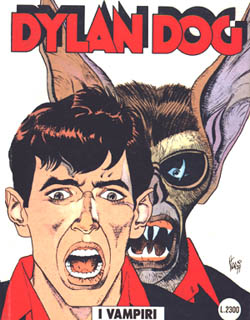
Dylan Dog is an Italian horror comics series created by Tiziano Sclavi and published by Sergio Bonelli Editore since 1986.
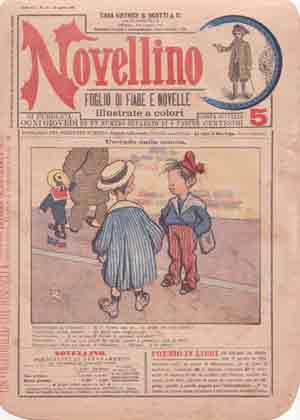
Italian comics, also known as fumetto, plural form fumetti, are comics that originate in Italy. The most popular Italian comics have been translated into many languages. The term fumetto refers to the distinctive word balloons that contain the dialogue in comics.
Renzo Barbieri was an author and editor of Italian comics as well as the founder of the publishing house Edifumetto. In 1980 he wrote Il Manuale del Playboy, a textbook about where European playboys live, what cars they drive, and other lifestyle tips.
Edifumetto was an Italian publishing house of comics, founded by Renzo Barbieri. It was started in 1972 and folded in 1993. The majority of their publications were digest- or pocket-sized adult comics known in Italy as fumetti. Popularity peaked in the mid 1970s when they were selling millions of comics each month. Their success was due in large part to the elaborate cover illustrations, rendered by classically trained painters such as Alessandro Biffignandi, Emanuele Taglietti, Pino Dangelico, Fernando Carcupino, Roberto Molino, Carlo Jacono, Averardo Ciriello or Enzo Sciotti.
Dampyr is an Italian comic book series created by Mauro Boselli and Maurizio Colombo and first published by Sergio Bonelli Editore in 2000.
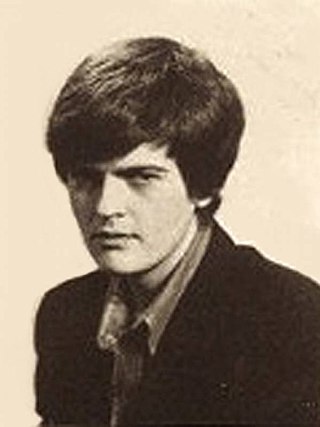
Tiziano Sclavi is an Italian comic book author, journalist and writer of several novels. Sclavi is most famous as creator of the comic book Dylan Dog in 1986, for Italian publishing house Sergio Bonelli Editore. More than 300 issues have appeared in the series, which has sold millions of copies. It has been in collaboration with several artists, including Claudio Villa, Corrado Roi, Gustavo Trigo, Carlo Ambrosini, Luigi Piccatto, Angelo Stano, Mike Mignola, Andrea Venturi, Giampiero Casertano and Bruno Brindisi.

Leone Frollo was an Italian comic book artist.

Lucifera is an anti-heroine of the eponymous 1970s Italian comic book, published between 1971 and 1980 by Ediperiodici. The series, along with more well-known series of the era like Isabella and Goldrake, is among those created by Renzo Barbieri and Giorgio Cavedon, published between the late sixties and early seventies. The series led to the birth and development of the Italian erotic genre.
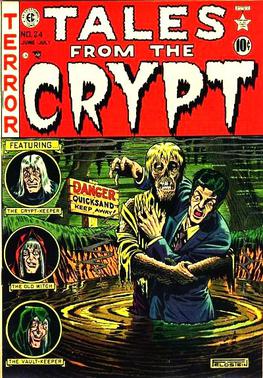
Horror comics are comic books, graphic novels, black-and-white comics magazines, and manga focusing on horror fiction. In the US market, horror comic books reached a peak in the late 1940s through the mid-1950s, when concern over content and the imposition of the self-censorship Comics Code Authority contributed to the demise of many titles and the toning down of others. Black-and-white horror-comics magazines, which did not fall under the Code, flourished from the mid-1960s through the early 1980s from a variety of publishers. Mainstream American color comic books experienced a horror resurgence in the 1970s, following a loosening of the Code. While the genre has had greater and lesser periods of popularity, it occupies a firm niche in comics as of the 2010s.

Zora is an Italian comic book erotic character from the 1970s. Zora la Vampira is one of many such characters from the Italian fumetti tradition. Other figures from the same era, and with similarly violent or erotic preoccupations, include Maghella, Lucifera, Biancaneve, Vartan, Jacula, Sukia, and Yra.

Akim is the title character of an Italian adventure comic series created by writer Roberto Renzi and illustrator Augusto Pedrazza.
Snow White is a Disney media franchise that began in 1937 with the theatrical release of Snow White and the Seven Dwarfs. It is based on the 1812 fairy tale by the Brothers Grimm.
Federico Pedrocchi was an Italian comic book artist and writer. He sometimes used the pen name Costanzo Federici. He founded the magazine Paperino e altre avventure in 1937, and wrote some of the earliest Disney comic book stories.

Fernando Carcupino was an Italian painter, illustrator and comics artist. He was most widely known for his female nudes, but he also painted landscapes, still lifes, historical subjects, and portraits of mothers and their children. In his early career he worked as a comics artist for Asso di Picche.

Isabella is an Italian comic book series created by Giorgio Cavedon as the writer and Sandro Angiolini as artist.
Alessandro Biffignandi was an Italian illustrator, mostly known for his covers for digest-sized, adult comics whose themes were sex, violence, and horror.
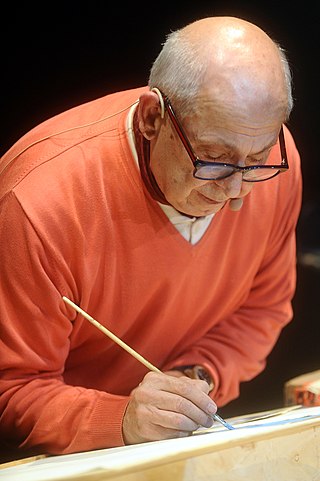
Emanuele Taglietti is an Italian illustrator, mostly known for his covers for digest-sized, adult comics whose themes were sex, violence, and horror.

Blue was an Italian erotic auteur comics magazine, published from 1991 to 2009 in Rome, Italy.
Giorgio Cavedon was an Italian publisher, cartoonist and screenwriter. Cavedon was most associated with his adult comics he wrote with Renzo Barbieri. His first comic, Isabella was Italy's first openly erotic fumetto.

Dampyr is a 2022 English-language Italian fantasy horror film directed by Riccardo Chemello, based on the comic series Dampyr published by Sergio Bonelli Editore.













